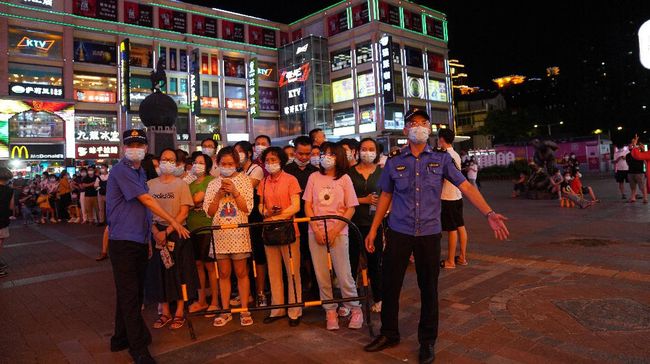New York. Many visitors did not expect anything good when Peter Gelb, the director of the New York Metropolitan Opera, stepped in front of the still closed stage curtain on New Year’s Eve. For days, the metropolis has once again become the epicenter of the corona pandemic. Several Broadway theaters had to cancel their shows due to the illness of artists. It was also uncertain for a long time whether Verdi’s “Rigoletto” could actually premiere at the Met.
But yellow was able to reassure the audience: “We have no failures.” Loud applause broke out from the fully occupied stands. Only a few seats remained free at the gala performance in the expensive stalls. Every visitor had to show proof of vaccination when entering and wear a mask inside, which was actually obeyed.
Unlike Rigoletto, who leaves the stage a broken man at the end of the opera, New York does not want to let itself get down. “This is an incredible city,” enthused Eric Adams a few hours later. The new black mayor took his oath of office shortly after the turn of the year at midnight around 20 blocks south of the Met, in the famous Times Square. 15,000 instead of the usual more than 50,000 spectators were allowed to attend the New Year’s Eve party there, which was basically free of firecrackers. “We’ll show the whole country how to get back,” Adams announced defiantly. Like his predecessor Bill de Blasio, he wants to avoid a new lockdown that could cost many self-employed people their livelihoods at all costs.
Contradictions in dealing with the virus
At the beginning of the new year, the mood in New York is characterized by strange contradictions. On the one hand, the city reports new record infection numbers every day, which have increased sevenfold in the past two weeks to 35,000 in one day. Not only Broadway theaters have to cancel performances due to a lack of staff. Restaurants also have to close, and the subway can only operate irregularly on many routes. But at the same time the city demonstrates an almost stubborn determination for normalcy and the will not to let a virus dictate your life.
The bare numbers are staggering: More than 500,000 new Covid cases are now reported daily in the USA. Scientists at Columbia University have calculated in a model that the number could skyrocket to 2.5 million by mid-January. Virtually everyone in New York knows a friend or colleague who has Omikron. Every sixth urban firefighter and every third paramedic is infected. According to a survey by the Brooklyn Chamber of Commerce, 60 percent of all companies are absent due to a Covid infection.
Three out of four New Yorkers are vaccinated
On the other hand, 73 percent of New Yorkers are immunized. In the meantime, all urban and private employees are required to be vaccinated. Anyone wishing to visit a restaurant or a concert must also provide evidence of a booster injection from mid-January. Despite the skyrocketing number of infections, the course of the disease with Omikron seems to be mostly milder.
The bed occupancy in the clinics is also increasing, but so far it is only half as high as at the height of the pandemic in spring 2020. With 80 deaths in one day, the number of victims in New York State is dramatically lower than it was on a few days more than 1000 people lost their lives.
In the cityscape of Manhattan, the Covid test stations stand out, which after initial bottlenecks now seem to be on every corner. The queues have gotten shorter. There are rapid and PCR tests. However, numerous infected people report that their rapid tests initially showed a false negative result. You have to wait several days for the laboratory result of the PCR test. In view of the rapidly increasing numbers, uncertainty is likely to grow. After all, the mask requirement is largely complied with in the subway. Many people wear mouth and nose protection even on the street.
Outdoor dining on Second Avenue
The restaurants adapted to the difficult situation as early as the first Corona wave and often built wooden crates for outdoor dining on the wide streets. On a cold winter evening on Second Avenue, guests are sitting outside under warming radiant heaters. But a surprising number of people also choose a seat inside in the guest room.
On the way home you have to wait longer than usual for the subway. “We send as many trains onto the tracks as can be done with the staff who are available,” it says on the display board. After all, you can have yourself tested in many metro stations while waiting.
–
/cloudfront-eu-central-1.images.arcpublishing.com/madsack/TDMDY5Q3RBAS5NHGGHV62GP35U.jpg)

